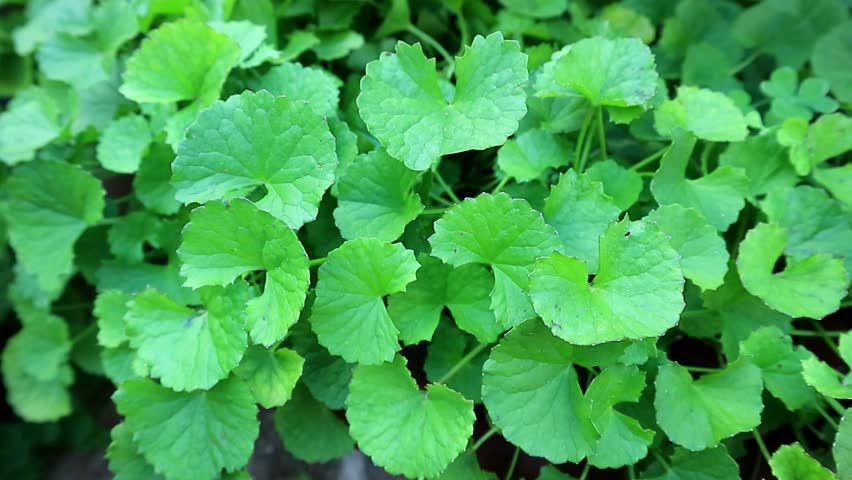

Centella asiatica (L.) Urb.
|
Indian pennywort is commonly known as Gotu kola and belongs to the family Apiaceae. It is a cure to stomach ailments. Gotu kola has the potentiality to decrease inflammation and improve collagen. Asiaticoside, a bioactive marker extracted from C. asiatica can inhibit lipopolysaccharide mediated fever and TNF-α and IL-6 production. Mode of Consumption : Raw, sauteed, fried and cooked |
| Plant Details | Agro-climatic Zone | Vernacular Names | Pictures |
| Scientific Name: Centella asiatica (L.) Urb. Family: Apiaceae Lindl. Class: Magnoliopsida Order: Apiales Genus: Centella L. Fruiting Season: Throughtout the year Parts: Whole plant |
|
Assam : Manimuni Bihar : Chokiora Kerala : Kodagam Maharashtra : Karinga, Karivana Tamil Nadu : Vallari West Bengal : Brahammanduki, Thankuni, Tholkuri |
 Leafy plant |
| Compound/Extract | Activity | Mode of Action | Marker/References |
| Ethanolic extract | Neuroprotective | C. asiatica treatment for 8 days significantly improved locomotor activity, anti-anxiety like effect and attenuated oxidative damage and TNF-α level as compared to sleep-deprived 72-h group in mice. | TNF-α[1] |
| Asiaticoside-G | Anti-inflammatory | Asiaticoside-G modulated the production of nitric oxide and TNF-α in activated RAW 264.7 cells. | TNF-α[2] |
| Ethanolic Extract | Anti-inflammatory, Neuroprotective | Lower TNF-α and higher Brain Derived Neurotrophic Factor (BDNF) in the hippocampus support the hypothesis that these factors independently contribute to C. asiatica’s neuroprotective effect in chronically stressed rats. | TNF-α, and BDNF[3] |
| Asiaticoside | Anti-inflammatory | Asiaticoside can inhibit lipopolysaccharide induced fever and inflammatory response, including TNF-α and IL-6 production. | TNF-α, and IL-6[4] |
| Ethanol extract | Anti-inflammatory | C. asiatica treatment enhanced anti-fibrotic mRNA expression of both BMP-7 and HGF in Chronic kidney disease. It also demonstrated anti-inflammatory activity by the inhibition of inflammatory factors, such as IL-6, IL-1β, and TNF-α. | BMP-7, HGF, IL-6, IL-1β, and TNF-α[5] |
| Madecassoside | Anti-inflammatory | Anti-inflammatory effect of Madecassoside in mice with C. asiatica may be associated with the inhibition of the production of TNF-α, IL-6, PGE2 and the expressionof COX-2, as well as the upregulation of the expression of the anti-inflammatory cytokine IL-10. Madecassoside inhibited the activation of Caspase-3 and p38 MAPK. It significantly inhibited UV-induced melanin synthesis and melanosome transfer by suppressing PAR-2 expression and its signaling pathway involving COX-2, PGE2 and PGF2α in Keratinocytes. It is also associated with the inhibition of p-cMET, p-ERK1/2 and PKC activity. | TNF-α, IL-6, IL-10, Caspase-3, p38 MAPK, PAR-2, COX-2, PGE2, PGF2α, p-cMET, p-ERK1/2, and PKC[7] |
| Asiatic acid | Anti-inflammatory | Asiatic acid inhibited p38 MAPK and ERK 1/2 phosphorylation, block IL-1 activated NF-κB signaling, and suppress PI3K/AKT/mTOR signaling. Asiatic acid also inhibited TGF-β I- induced collagen type I and plasminogen activator inhibitor-1 (PAI-1) expression, while increasing Smad7 protein level in KFs via activation of PPARγ. | [7] |
| Leaf extract | Hepatoprotective | C. asiatica decreased the expression of proinflammatory cytokines, including IL‑1β, IL‑6, TNF‑α, and other inflammatory cytokines and mediators in parallel with decreasing the levels of inflammatory cytokines in dimethylnitrosamine induced liver injury. | IL‑1β, IL‑6, and TNF‑α[8] |
| Aqueous extract | Immunomodulatory | In human peripheral blood mononuclear cells (PBMCs), aqueous extract significantly increased proliferation and the production of IL-2 and TNF-α. | IL-2 and TNF-α[9] |
| Major Class | Metabolites (Content of bioactives: mg/100g Fresh Weight) |
| Triterpenoid | Asiatic acid: , Asiaticoside-G: , Brahmoside: , Madecassic acid: , Madecassoside: [7] |
| Effect | Observation | DOI |
| Disease | Formulation | Reference | Author | TKDL |
| Venereal disease, Urinary disorders / Polyuria | Vallarai Chooranam | Agathiyar vaithia kaviyam,1500 | Agasthiyar | Siddha |
| Trachoma, Adherent leucoma / Corneal opacity, Cyst of Zeis gland, Iris prolapse / Anterior staphyloma, Inflammatory condition of the eye lid, Acute Mucopurulent conjunctivitis / Allergic conjunctivitis, Falling of eye lashes / Madarosis | Vallarai Mai | Agathiyar nayanavithi 500 | Agasthiyar | Siddha |
| Information from Wealth of India | Reference |
|
CSIR(1950).The Wealth of India, Raw materials,Vol.- II,P.116-118, New Delhi, India |
| 4.2, 04.2.1, 04.2.1.1, 04.2.1.3, 04.2.2.3, 04.2.2.5, 04.2.2.8 |
| CSIR-North East Institute of Science and Technology, Jorhat-6, Assam, India
CSIR-Institute of Himalayan Bioresource Technology, Palampur-61,Himachal Pradesh, India |